MG4 review and buyer's guide
Price is likely your biggest obstacle before stepping up to buy an electric vehicle. So MG has set a market-low price on its new MG4. Here’s what you need to know about Australia’s most affordable, yet practical EV.
The MG4 is a small-medium hatchback from the resurrected Chinese-owned MG brand which has been making waves in the automotive world by representing decent value – especially in the crowded field of overpriced electric vehicles.
MG4 is a triple threat: it drives quite nicely, offers good comfort and features, and it’s affordable. But should you consider one? And what variant should you go for?
Just to clear things up, the MG4 is a fully electric vehicle that competes in the premium small-car class against products such as the BMW 1 Series, Nissan Leaf and Subaru WRX. It’s being offered in a variety of power levels in Australia, with rear- and all-wheel drive configurations.
There are five main models to pick from, including a high-performance version called the XPower that promises a 0-100km/h sprint in a supercar-like 3.8 seconds.
What exactly is the MG4, you might be wondering at this point, especially if you’re new to EVs or even the modern new-car buying landscape.
The MG4 is produced by parent company SAIC Motor in China. It is the company’s first new-generation EV model to land in Australia, and it’s the first model to be built on the parent company’s recent Modular Scalable Platform. This platform has been designed from the ground up to accommodate electric powertrain systems. That’s a good thing, meaning it is solely designed to be an EV from the start, not hastily adapted from a combustion base, as was the case for many first-gen EVs in the last decade.
Why does this matter? A new platform is usually a good thing because it means it is packaged with the company’s latest and greatest developments. That spans from safety and in-car technology, to cabin space and comfort. It’s all improved. Most of the time anyway.
It’s difficult to describe the body design and vehicle style, as the MG4 is not a sedan and not a conventional hatchback, but it’s not really an SUV or crossover, either. The ground clearance height is 158mm, which is slightly more than what is typically offered in a hatchback – the Kia Cerato hatch is measured at 140mm.
There’s probably no point in stressing about what type of vehicle category this fits into. Just take it as it is. Against those official rivals, according to VFACTS classification, the MG4 is one of the most spacious inside, yet, measuring 4287mm long, it is quite short. The width of 1836mm is only slightly above a typical small hatchback such as the Cerato.
FEATURES & PRICING
In order to clear a bunch of 2023 stock, MG Australia has slashed the cost of the MG4 across the range, making it as little as $32K to get yourself into an EV. That’s an outrageously good value proposition. Watch the full report below for details.
One of the most attractive things about the MG4 is the price. You can get the ball rolling from $38,990 for the base model (excluding on-roads). That’s cheap for an EV at this stage of the technology’s development rollout.
For that you get 350km of range and a 125kW rear-mounted electric motor. This is called the MG4 Excite 51 because it uses a 51kWh battery. The Excite trim level is also available with a 64kWh battery that increases the range to 450km and power output to 150kW. It’s priced from $44,990.
And then you moved up to the Essence trim which uses the same 64kWh battery and 150kW motor but the range drops to 435km. Prices start from $47,990. At the top end of the regular range is the MG4 Essence 77. It uses, you guessed it, a 77kWh battery to feed a 180kW rear motor, offering a range of 530km. Prices start from $55,990.
If none of this interests you and you prefer your internal organs to be compressed while you’re driving, then perhaps the XPower flagship will tickle your fancy? It uses a 64kWh battery but with twin electric motors, combining to unleash 320kW and 600Nm. Despite offering supercar performance the XPower is relatively affordable, starting from $59,990.
Excite 51 | RWD or AWD
starts with:
TECH
Android Auto & Apple CarPlay
7-inch digital cluster
10.25-inch touchscreen
4-speaker stereo, DAB+
Vehicle to load functionality
DRIVING
LED DRL, headlights & taillights
Electronic parking brake
Auto start/stop & keyless entry
Electric, heated door mirrors
Reverse camera
Adaptive cruise control, auto emergency braking
MG Pilot – Lane keep assist, lane departure warning
Tyre pressure monitoring
5 driving modes (Eco, Normal, Sport, Snow, Custom)
INTERIOR
Driver’s 6-way manual adjustable seat
60/40 split-folding seats
Synthetic leather steering wheel, cloth seats
Boot cargo net
17-inch alloy wheels with aero cover, 215/50 R17 tyres
Puncture repair kit - no spare wheel
2 x front USB ports (USB-A + USB-C), 1 x rear port (USB-A)
Excite 64
Adds 100km of additional claimed range with 64kWh battery
Essence 64 (RWD) adds:
6-speaker stereo
6-way electrically adjustable driver's seat
EV trip planner
"Twin-Aero" rear spoiler
Heated front seats
Heated steering wheel
360-degree camera
MG Pilot - 14 safety features
Two-tone roof
Auto-dimming rearview mirror
Synthetic leather & cloth seat
Dual-level boot floor
18-inch alloy wheel with premium aero cover
Voice control
Wireless phone charging 15W
Long Range 77
Up to 530km (additional 95km over Essence 64) of claimed range with 77kWh battery.
INTERIOR
This is a very futuristic, almost spaceship-like cabin environment. The dash is heavily sculpted and features a floating platform for the gear selector, with hidden phone charging ports underneath that are hard to reach. The instrument gauges are provided on a very simple rectangular screen.
It’s very spacious and open for this class, making it feel much bigger than what the dimensions suggest. With a flat floor, rear seat space is great. Ample headroom clearance is provided by a deep ceiling, too, and there is some storage around the centre console.
The base Excite 51 is presented with a mostly monotone trim with basic materials, and generally feels and looks a bit cheaper than the others. But, fortunately, it is cheaper so you tend to allow some tolerance for this sort of thing.
All models come with a 10.25-inch touch-screen offering Android Auto and Apple CarPlay compatibility, and all present five driving modes including one-pedal driving that relies on strong regenerative braking. There are actually four different stages of regenerative braking that you can choose from, including an automatic mode.
Boot space is listed at 363L or up to 1177L in the Excite 51, or 350L/1165L in the Essence models, and back to 363L but expanding to 1165L in the XPower. It's not the largest boot in this class but it is practical enough and it meets the class standards for what is generally accepted as normal.
ENGINE
With five different options here it can be overwhelming. Which one is best for your needs? Firstly, think about your main objective; what are you going to use this car for? What is its primary purpose? If this is going to be a second car and you live in a thick suburbia or in the city, you could consider the entry Excite 51 purely for its value proposition.
The 350km of suggested range should be enough to get you around on a daily basis, but you’re not missing out on performance or cabin packaging. Acceleration from 0-100km/h takes a claimed 7.7 seconds, and actually the Excite 64 is a bit slower at 7.9 seconds, or 7.2 seconds for the 64 Essence. These are quick times in any case, and certainly quicker than many of the base-spec rivals in this specific class.
If you’re doing a lot of driving through the week then the Excite 64 or the top Essence 77 is what you should look at. With range figures of 450km and 530km, respectively, this should be able to run errands without range anxiety kicking in.
Obviously if you’re a driving enthusiast the XPower model has already captured your attention. With 320kW, this is a serious performer and it shouldn’t be taken lightly. Accelerating from 0-100km/h in 3.8 seconds places a great deal of force on your body. You'll experience around 1g, in fact.
To put that into perspective in conventional petrol-powered realms, 3.8 seconds makes it quicker than a manual BMW M3, current model (4.2 seconds). It’s also quicker than a current model Audi RS4 (4.1), and not far off a Lamborghini Urus (3.5). This is not a vehicle that should be driven flippantly, and ideally not by a driver with very little experience.
DRIVING
It’s very quiet, obviously, and it feels nice through the steering. Visibility is good thanks to large windows and a low bonnet, and the ride comfort is reasonably compliant and well-sorted for an electric vehicle. And by that I mean EVs are usually heavy, which causes complications and stress for the engineers as they have to try and balance out the ride and the fundamental purpose of suspension.
However, the MG4 is relatively light in weight compared with others. The base 51 Excite weighs 1655kg, and the dual-motor XPower weighs 1800kg. For comparison, the base Polestar 2 RWD weighs 1944kg, although it does sit in the class above as a mid-size model.
As a side-benefit to this relative lightness is enthusiastic handling. This feels agile and it seems to enjoy taking on corners, turning in with very little body roll and maintaining its line with precision and confidence. It can feel like a futuristic capsule at times, with its low windscreen and unusual so-called floating dash design, but make no mistake, you can have some fun driving this.
What really sets it apart from a conventional combustion-engined vehicle is the throttle response – like with any electric vehicle. This brings in an all-new dimension of driving interaction as you can learn and enjoy how to apply the power in a much more immediate fashion. On a spirited road, you only need to poke the throttle for a second or two to pounce from corner to corner.
All models offer decent power, with the Excite 51 producing 125kW, and then up to 150kW for the RWD 64 models, and 180kW for the Essence 77. And all feel quick and energetic even with half throttle applied.
For the XPower version MG has supplied larger brakes, appropriately, with 345mm discs on the front and 340mm on the back, up from 300mm/300mm on the regular models. The discs are also thicker, measuring 30mm front and 22mm back (ventilated), up from 25mm front and 12mm (solid) on the back.
MG says the calipers are “Continental Sports” items, using a larger fist-type mechanism. And these wear bright orange ‘caliper covers’ for added visual impact. MG claims a 100-0km/h emergency stopping distance of 33.9 metres, which is on par with higher-end vehicles.
The XPower also features a unique suspension tune to harness all of that speed and power, with thicker stabiliser bars and firmer springs, and a revised steering calibration. There’s also a set of unique 18-inch alloy wheels wearing 235/45 Bridgestone Turanza tyres for added grip.
Charging
All models except the base Excite 51 offer DC (fast-charger) charging at up to 140kW, which means the 64kWh battery can go from 10-80 per cent capacity in around 26 minutes, while the 51kWh system requires around 40 minutes on a 50kW DC charger.
All models can be recharged at home as well using a conventional 2.4kW household socket. But this will take quite a long time. It’s around 21 hours for the 51kWh battery or around 32 hours for the 77kWh battery.
MG does offer a single-phase Charge Hub package though, which is what you should opt for or a similar aftermarket system if you’re considering an EV. It boosts output to around 7kW and slashes the full-charge time down to around 7.5 hours for the 51kWh battery, or 11 hours for the 77.
MG also offers a three-phase Charge Hub with an output of 11kW, but you need to have three-phase power at your home for this to work (most homes are single-phase). At that output the full charge times drop to around 4.5 hours and 7 hours, respectively for 51 and 77 battery options.
Given how affordable the MG4 is now, it would be absurd if you didn’t have a proper home charger installed to ensure you’re always leaving the house in the morning with a full tank of electrons. Basic EV chargers are only ab0out $2000-3000 and will significantly improve the overall operability of the MG4 in a daily-driving context.
Just make sure you have the charger wall box installed outside of your enclosed garage space - in the same way refuelling any combustion vehicle is done in an open service station forecourt - to ensure that in the highly unlikely event that something goes wrong while the battery is charging, it’s not happening in a confined space.
In the rare chance there is a thermal runaway fire event, you want the vehicle off-gassing into an open space and not into a closed-up garage where toxic vapours can build and explode. You also want easy access for fire crews and bystanders to get away.
This is not an attempt to scare you, it’s just the kind of logical safety advice you won’t get from the media, the government, the carmaker and probably not even the electrician installing the charger. It’s a safety precaution to keep you safe.
Should you consider an MG4?
To be frank, the EV charging infrastructure is still very much in its infancy in Australia, with a real lack of stations available, especially in semi-rural and rural areas. If you do a lot of travelling from week to week, an EV is not going to be a dependable source of transport, but a home charging system will help ensure you’re always leaving with a full battery in the morning. You’ll need to schedule each trip and movement very precisely and have allowances for back-up solutions, because it’s not uncommon for public stations to be out-of-order from time to time.
If you live in an apartment complex you will also need to check if it's okay to use the power in the garage to charge your EV. Many complexes do not allow EV charging unless you can separate the power from the building or use power directly from your apartment. These issues are not limited to the MG4, though, but rather any EV.
On the other hand, if you are in the market for a cheap run-around vehicle that offers good interior and boot space, a seven-year warranty, and goes well and looks unique, and you have access to power in your garage or carport, then the MG4 is a surprisingly thoughtful and practical vehicle worth considering.
HOW TO GET AN MG4 CHEAP
There is no more cost effective way for an ordinary person on a salary or wages to own an EV like the MG4, thanks to federal government incentives. Enquire about a novated lease on an MG4 by filling in the form below and our commercial partners will get in contact to assist you.
If you need to understand exactly how novated leases work in full, click here >>
Here is a comprehensive list of every EV & PHEV eligible for FBT exemptions >> which is important to understand so you don’t pick the wrong vehicle that breaches the threshold.
And this is the important 2023 update to the FBT exemption threshold: Major change to EV & PHEV tax cuts coming June 30 >>
If you’re thinking of taking advantage of these incentives, or you just have a question not answered in any of the above reports, fill in the form below.
I’ll help you save thousands on a new MG 4 here
LET’S GET TECHNICAL: WHY MG4 MATTERS
Carmakers hate when motoring journalists use the ‘c word’, but Australia's cheapest EV just got even cheaper - and you can own one using a novated lease for less than $140 a week. How times have changed.
The MG4 is a really exciting car to me because not only is it designed on a bespoke battery-electric platform with modular architecture, and not only does it have perfect 50/50 weight distribution and bias rear-wheel drive, but they're also doing a base model called the Excite51.
The 51 stands for a 51 kilowatt-hour battery, which is the baby battery.
The baby entry level price which is going to be like $38,990 plus on-road cost. Inspiring stuff if you're in the market for an EV but haven't been able to get over the somewhat extortionate price hurdle over an equivalent combustion car.
MG4 Excite 51, when it's finally available here in August, is the closest EV in Australia to what we really need, which is plug-in poverty pack. Now, it turns out I designed the perfect electric vehicle here >> with a full technical analysis of why we need cheap, low-range EVs, so check out that report.
All manufacturers at the moment are hell bent on making the big EV statement - I'm looking at you Hyundai and Kia with your Ioniq 5 and Ioniq 6, and Kia with the EV6 and EV9, and every Mercedes SUV that's been hastily modified for a battery powertrain. Chuck Tesla in there too, because: big and heavy.
The concept is ‘Big’. Make a statement. But what Aussies really need is the poverty plug-in EV because that's the thing that's going to make a difference more than anything else. Not just these huge EVs with massive price tags for the wealthy.
The interior is minimalist, but does it still function - or distract? You’ll have to wait and find out…
With this vehicle’s 51 kilowatt-hours, you want to know ‘How far does that take me?’ According to the official test the WLTP test, 350 kilometres of range is what you're going to get. If you step up with one additional battery module and you go for the 64 kilowatt-hour version, you get 450kms, so you get another 100kms of range. Then, if you step up once more and go for the Long Ranger with another 13 kilowatt-hour battery module, you get 530kms, or an additional 80 kilometres of range over the mid-spec.
This is a textbook example of the law of diminishing returns. Batteries are not only expensive, they're also heavy and that means the bigger the battery in an EV, the more of its own energy it has to use just moving itself from A to B, which is not an advantage for you.
If you want to know more about this problem, check out: The BIG problem with electric utes >> and the perfect example of this phenomena is in Reverse Engineering the LDV eT60: Australia’s first electric ute >>
It’s the same reason the Mercedes-Benz eVito and Ford E-Transit Custom vans suck as proper hard-working tradie vans.
The key question for ordinary Aussies who are just thinking about making the jump to an EV is, ‘Is it really worth paying $17,000 extra to go from 51 to 77 kilowatt-hours?’
You're going to go 1.2 seconds faster to 100km/h (for all those times that you drag race - i.e. never) and you're going to get an extra 180kms of notional range, most of which you'll never actually need in between recharging. Why?
Answer: How far do you actually drive every day? Australians average 15,000 kilometers a year. Divide that by 365n days, equals 41 kilometres per day, on average.
If the real-world range of the baby battery Excite 51 MG4 is gonna be a claimed 350km (using WLTP), then you could comfortably bank on 250 in the real world, because you might be running the heater and you might be driving at 110km/h, maybe the tyres are slightly under pressure, you’ve got some minor payload on board, maybe you live in a hilly area - and all of this stuff. So range is going to suffer.
In ordinary daily use, range is always less than the official test cycle. But 250km will be a safe but realistic estimate, and even if you drive four or five times the average distance of your annual 15,000 kilometres, you're still going to be safe from a range perspective, in the baby battery MG4.
So that’s nice.
Then you've got to think about recharging.
The baby-battery MG4 Excite 51 is going to accept a maximum fast charge of 88 kilowatts.
Now, the way this works is quite confusing if you are an EV novice. But I’ll try to help you understand it.
So, DC fast charging is a lot quicker than AC charging. So when you plug into a fast charger out on the public network somewhere, on location, en route from A to B, you insert the big nozzle into the port on your MG4 and you're getting DC out of that charger. That's what the flavour of electricity is in the battery, so you bypass a bunch of hardware and you're putting DC electricity into the battery which can accept DC straight away. And that’s an 88 kilowatts maximum accepted there.
That’s if you can find a charger that's actually working. This is its own big EV adventure, currently.
Presuming you can find one in operation, it's probably going to be a 50-kilowatt charger and that means if you're approaching dead flat, then you'll be there for about an hour at 50 kilowatts, in your MG4 Excite 51. But you'll be well under the maximum charge capacity of the car.
Using AC flavoured electricity to charge up the MG4, via the wires in the street connected to your home, that's always a lot slower because the charge capacity is less. Why is it less?
That's because you've got your AC going into the car but it has to convert to DC, before being tipped into the battery. The charge capacity of that conversion is less because a 50 kilowatt AC-to-DC converter in the car would be big, heavy piece of equipment that would make a bunch of heat - all of those things you don't want in your electric vehicle. So the charge capacity for AC charging, like at home, is 6.6 kilowatts.
Having gone down this track myself and installed a basic AC charger just outside the garage door, it does an okay job.
The wires in your street will probably deliver something like 100 amps of 230-volt electricity, single-phase, to your house (most houses are wired for single phase).
If you want to run a basic AC charger, it's got a 32-amp cable, which is a piece of cable about as thick as your thumb that goes straight from the meter box, on its own circuit breaker, all the way down to an isolation switch, and then into the charger. So it's taking roughly 60 per cent of the electricity potentially that you can use in total in your house, at any one time.
This is why it's always a good idea to charge up in the dead of night, if possible, because fewer appliances will be running. Comparatively, if you charge your EV in the middle of the day on a 32-amp cable, using the electricity supply from the street, then it's going to be 25-30 amps, roughly. And then if you run the washing machine, and a couple of air conditioners, and the jug, then you're going to be really close to maxing out the whole system.
You've got to be a bit careful about that total electricity usage. But 32 amps multiplied by 230 volts, equals 7.4 kilowatts of supply to the charger just outside, and the MG4 itself will accept 6.6 kilowatts, which means that if you come home almost flat, with a little bit of a safety margin, you'll be sleeping on it, and eight hours later the battery will be fully topped up.
If you’ve come this far, you might also be interested to learn more about the MG ZS EV: Australia's most practical electric vehicle - so far >> It’s an equally important EV in the Australian market because: it’s an SUV. And it’s electric. And it’s affordable.
For the full detailed report analysing the MG4, watch the full video report above. Alternatively, you can check out a bunch of my electric vehicle related reports below and pump some EV knowledge into your pink matter. Upstairs, obviously.


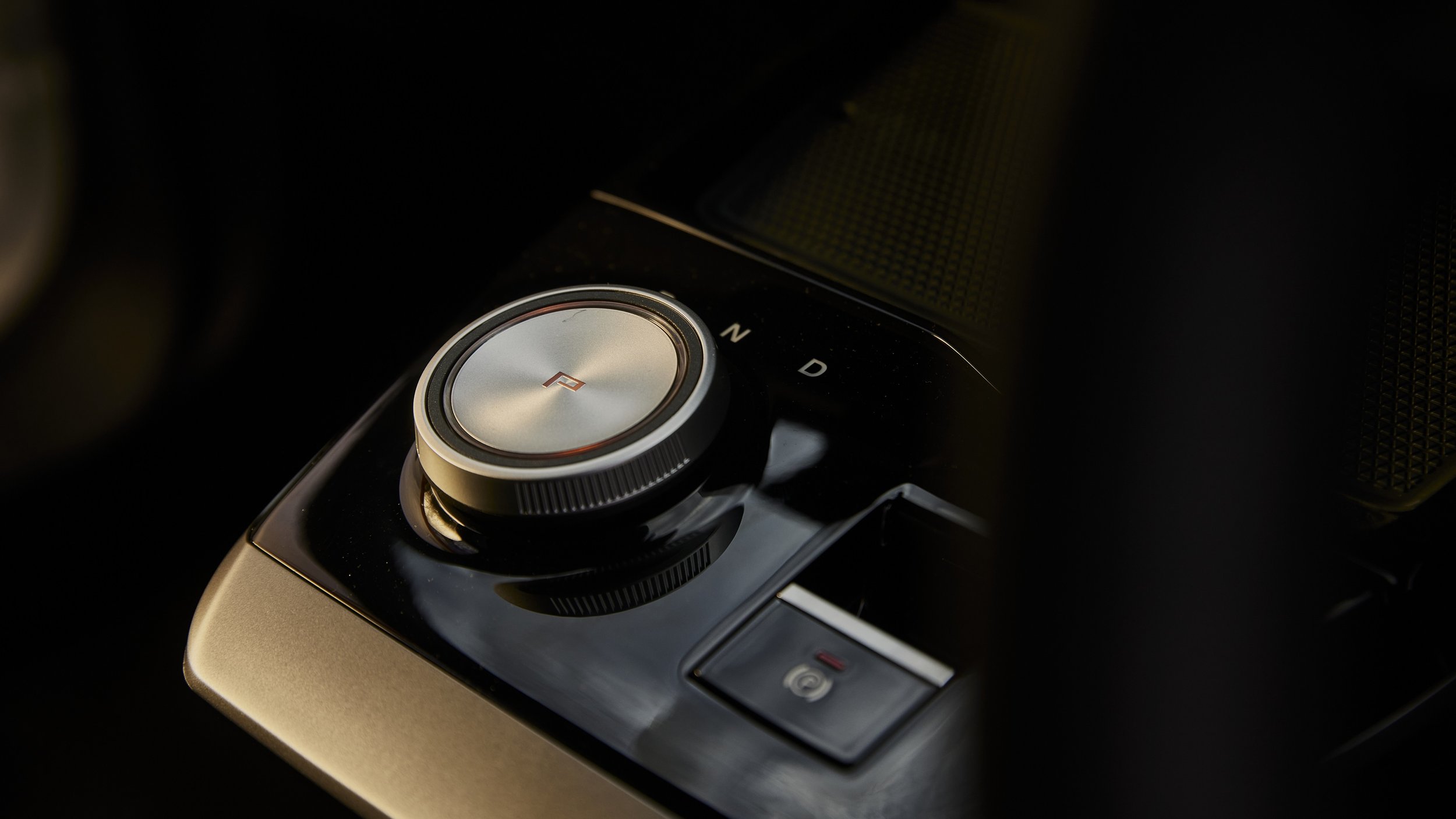
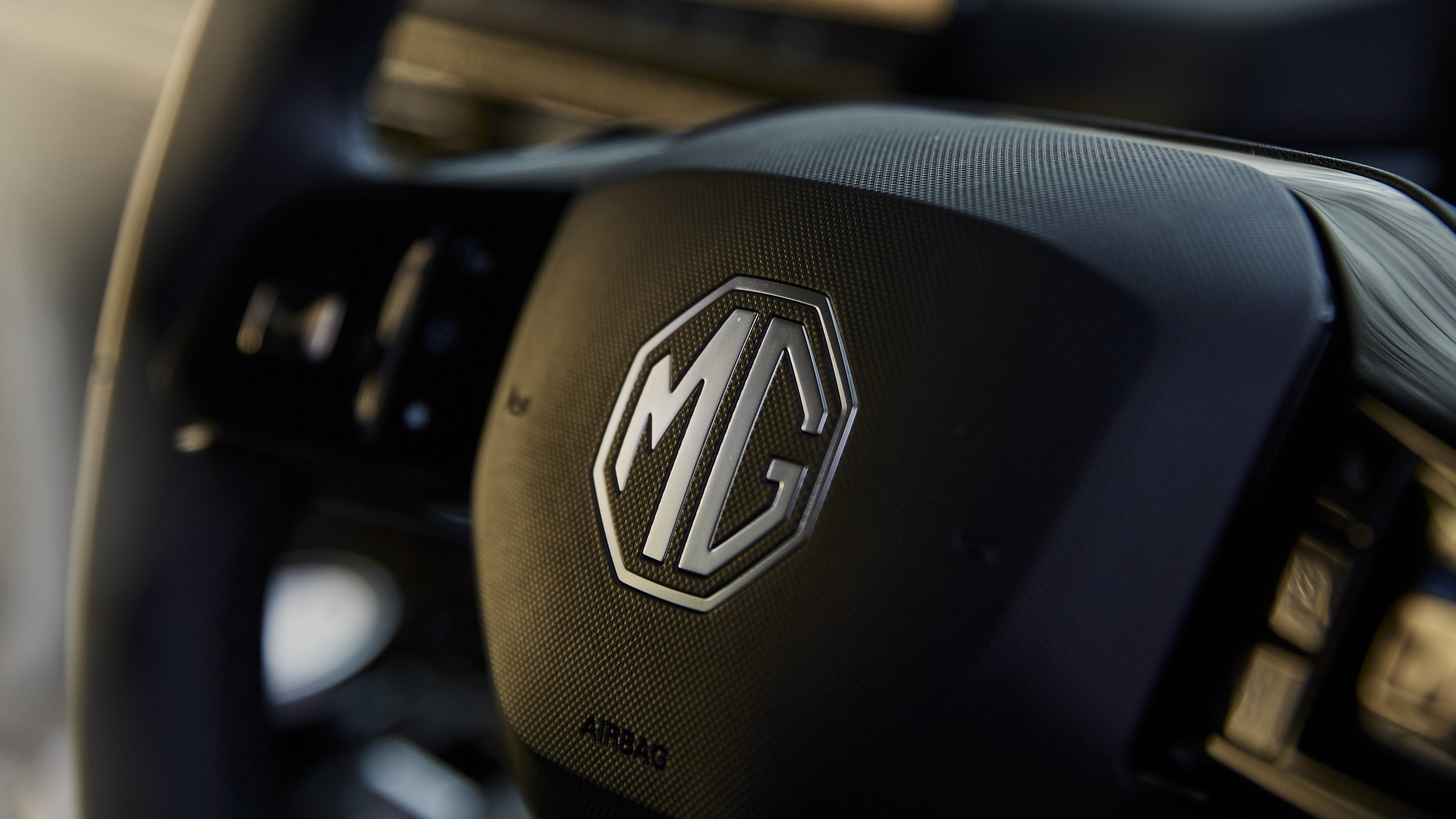
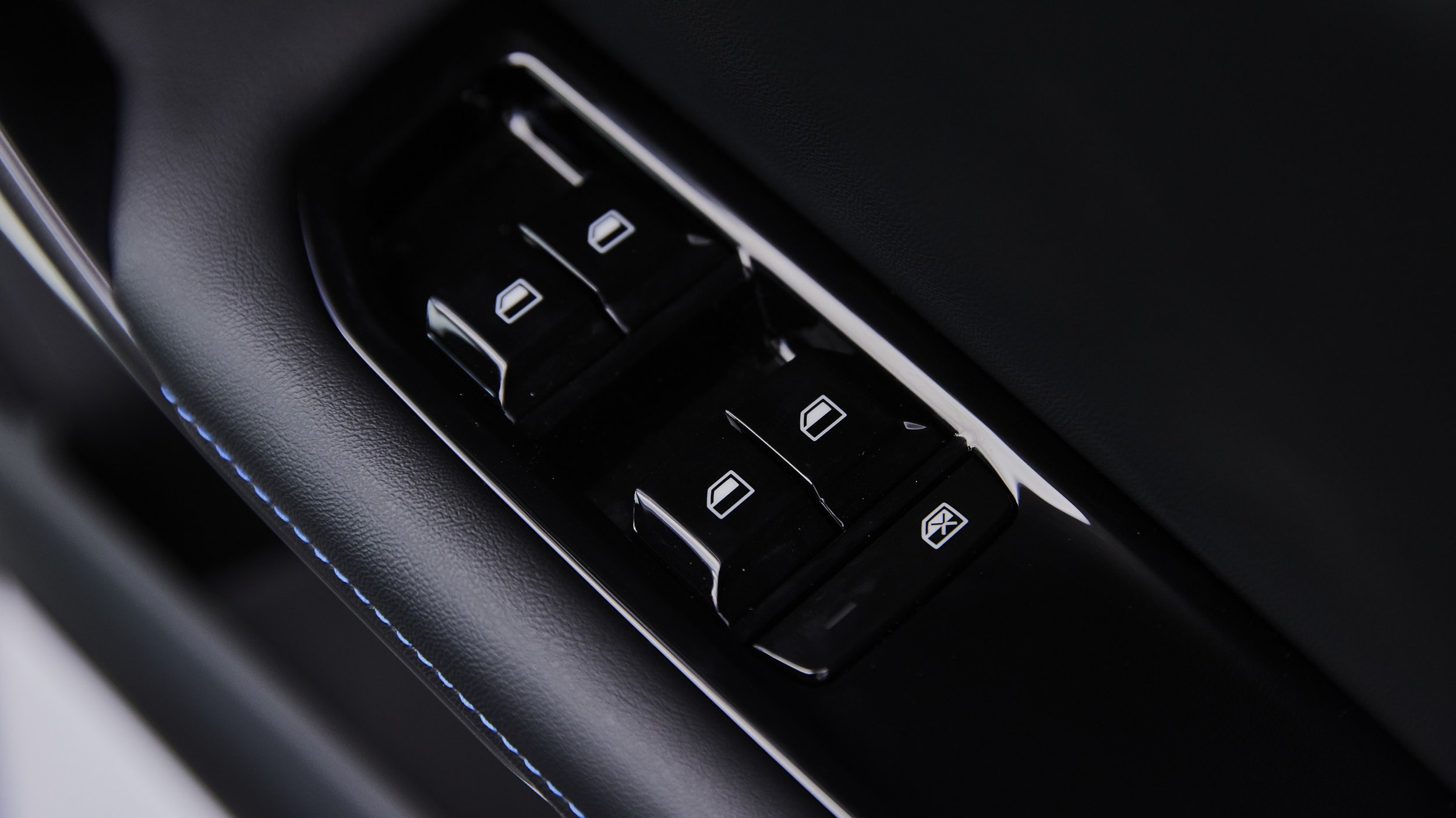
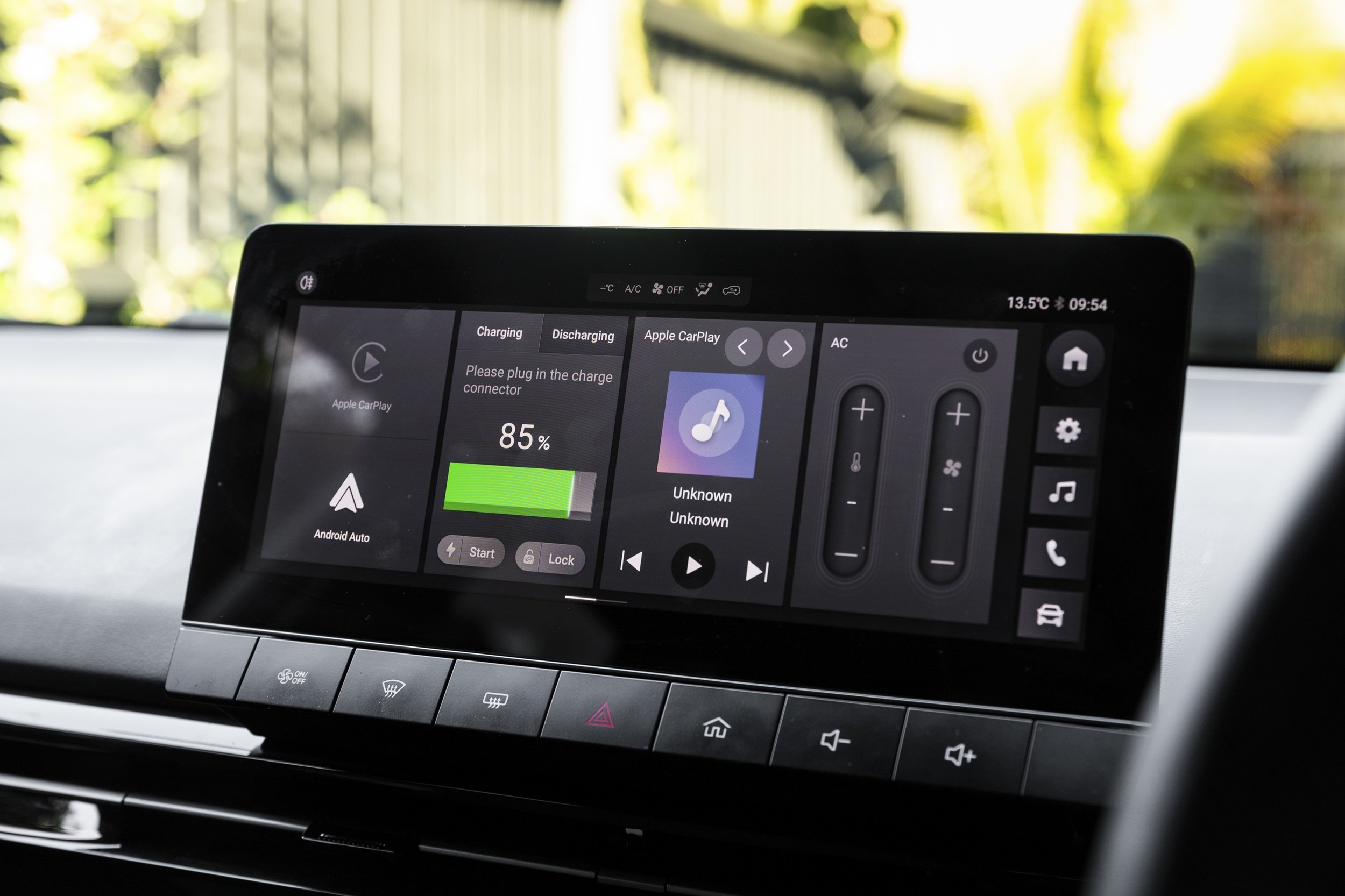

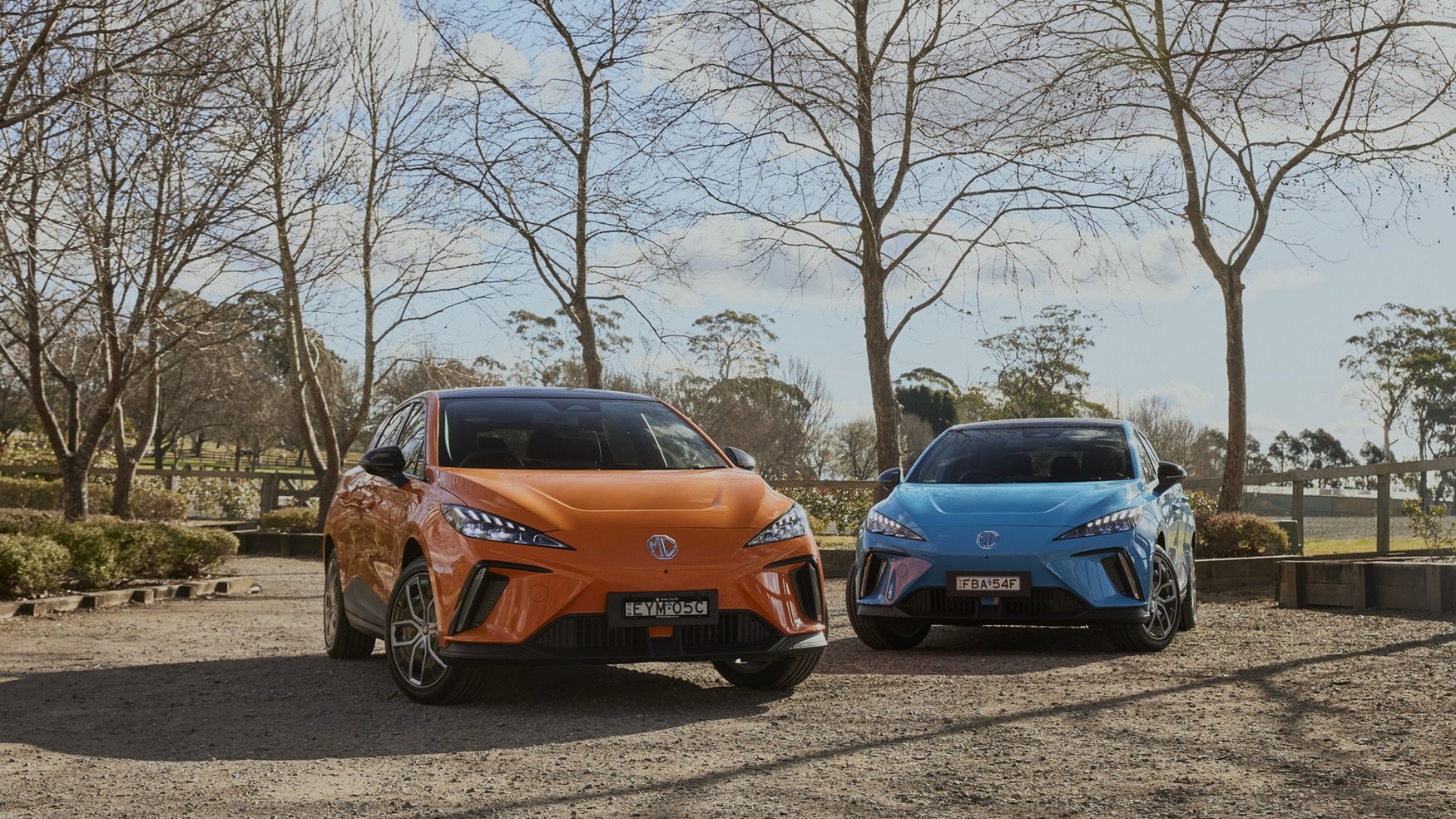

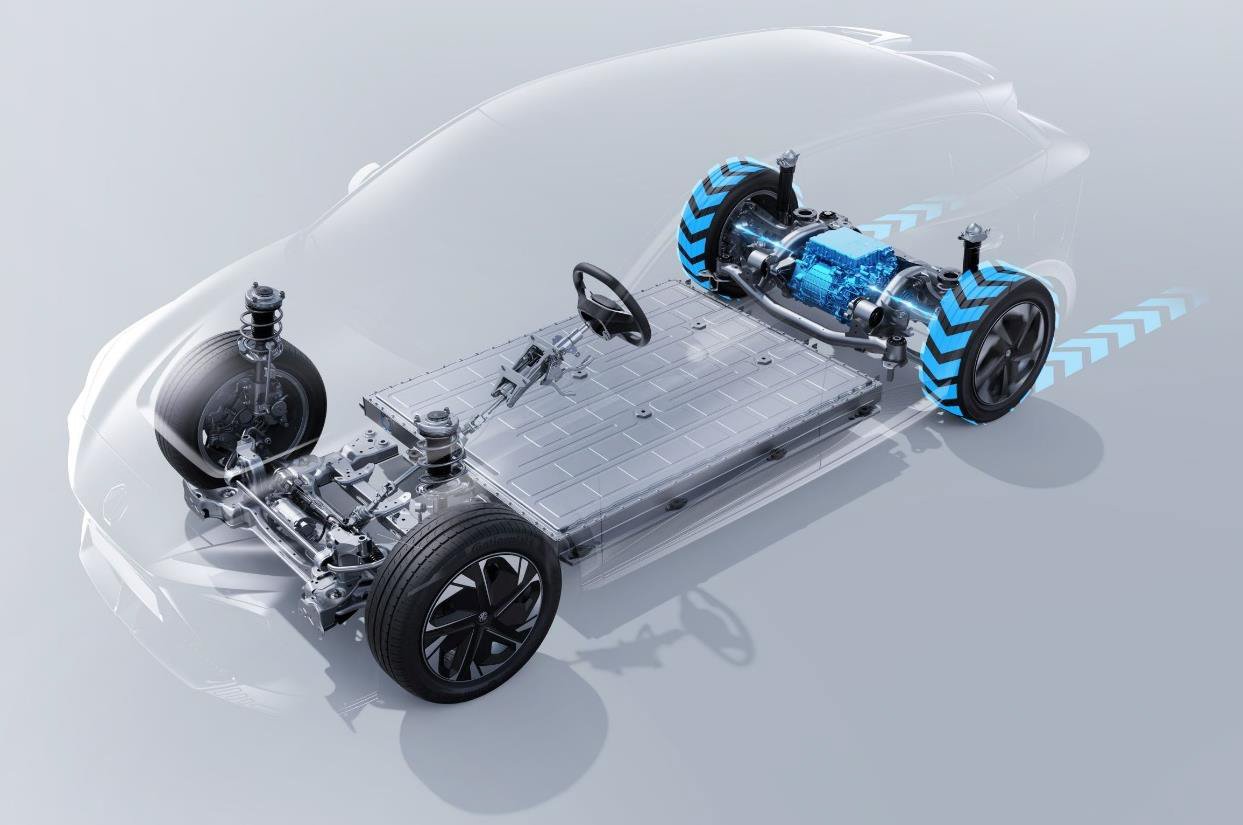
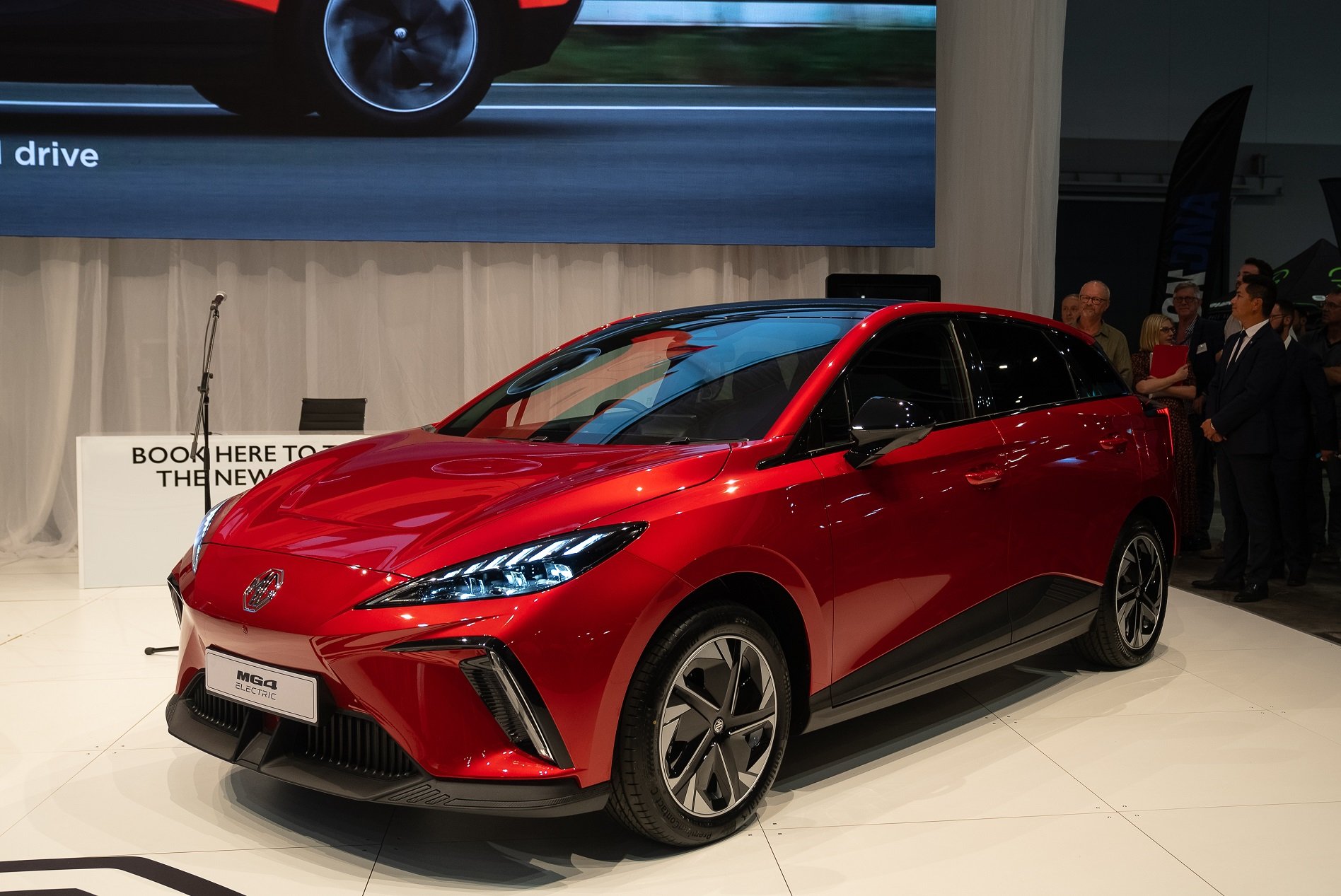
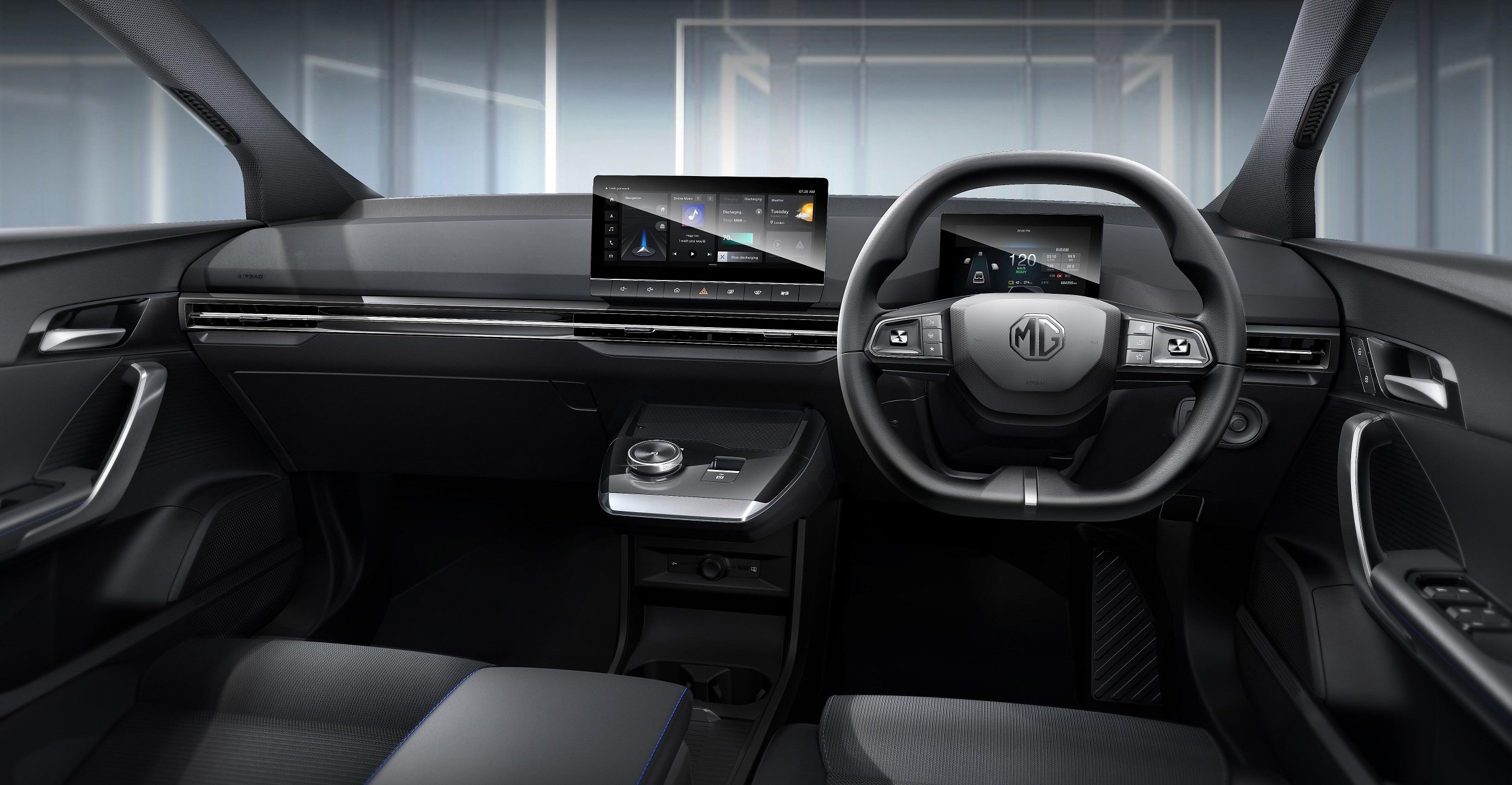














The 2026 Ranger Super Duty promises bigger towing, more payload, better off-road credentials and an even bigger price. But can Ford improve the ownership experience and general reliability?